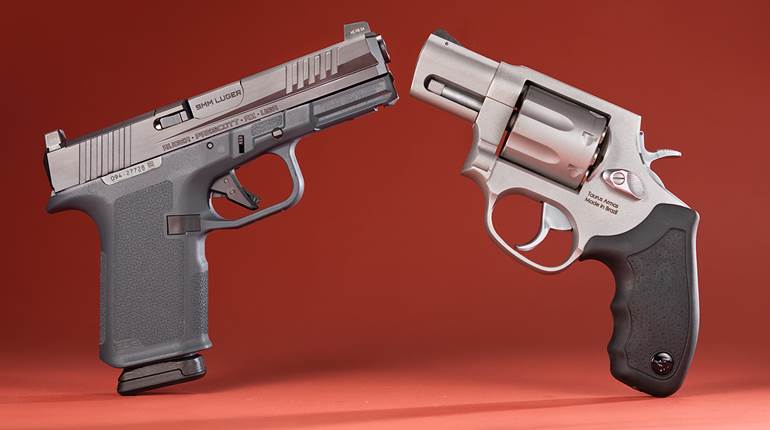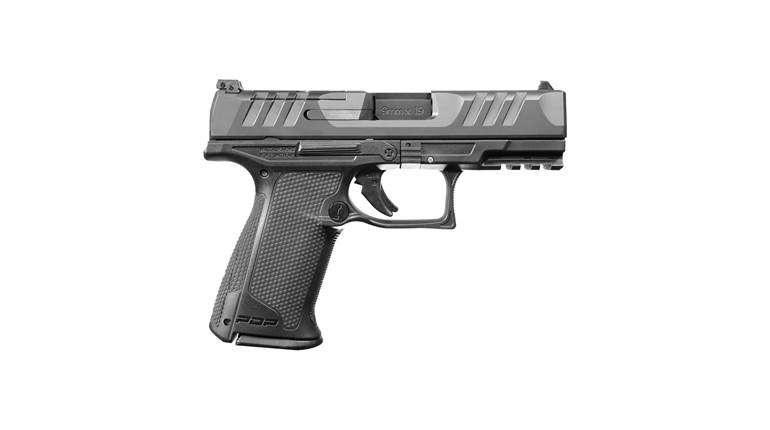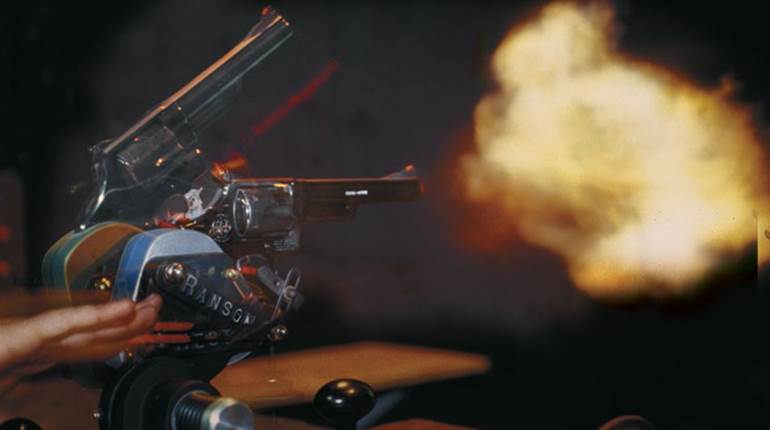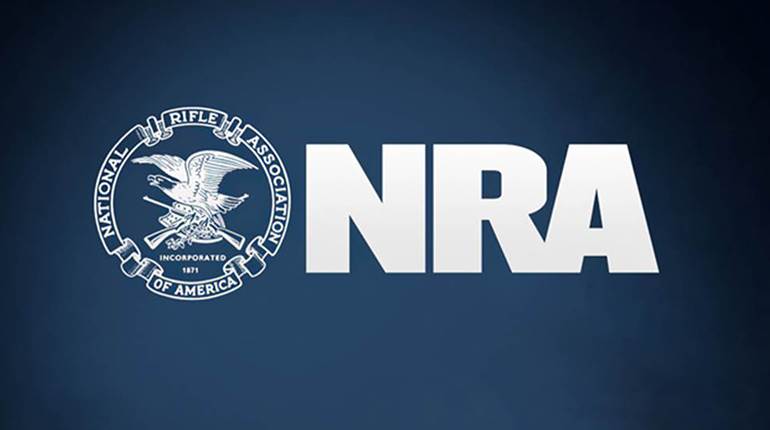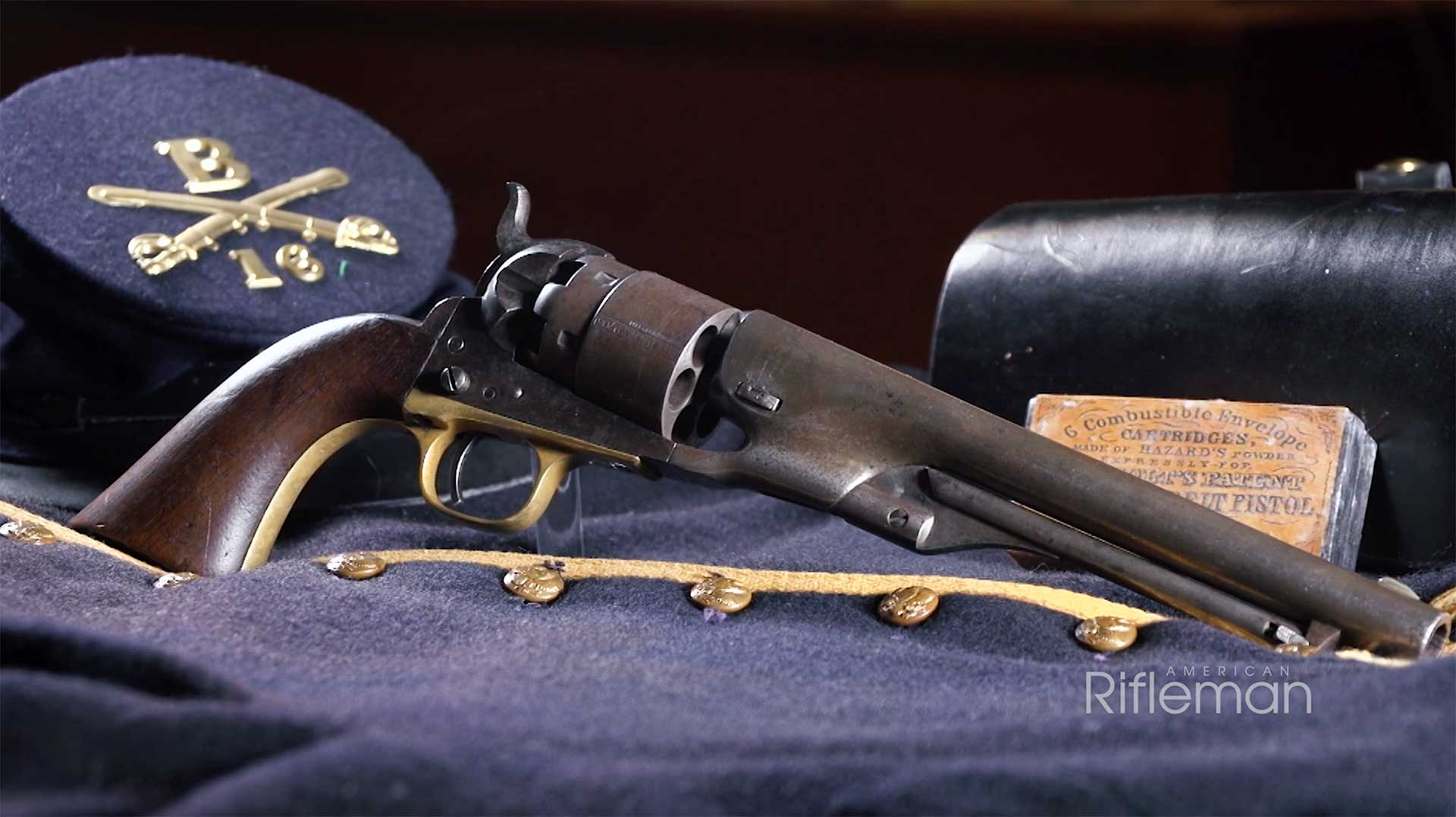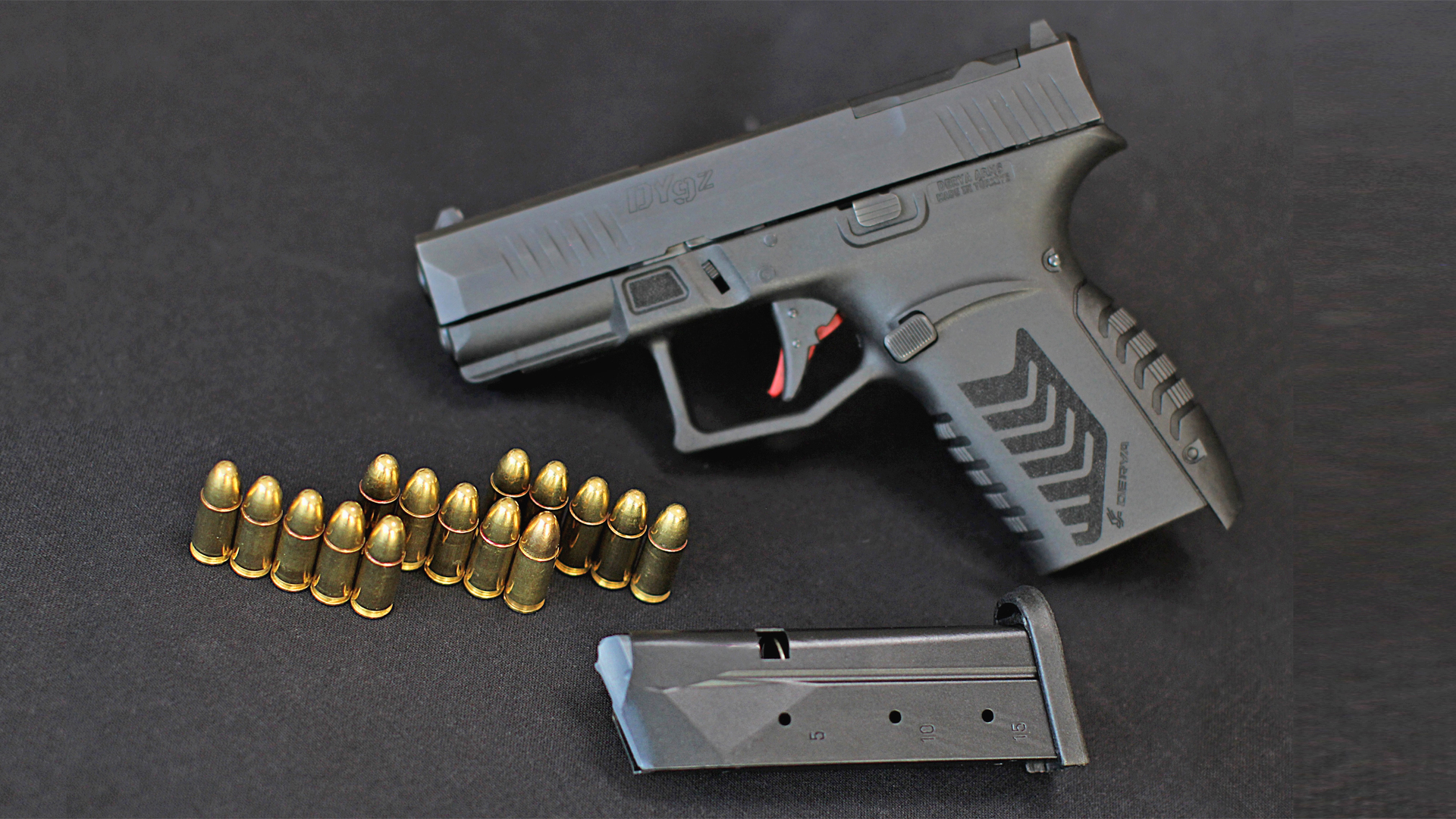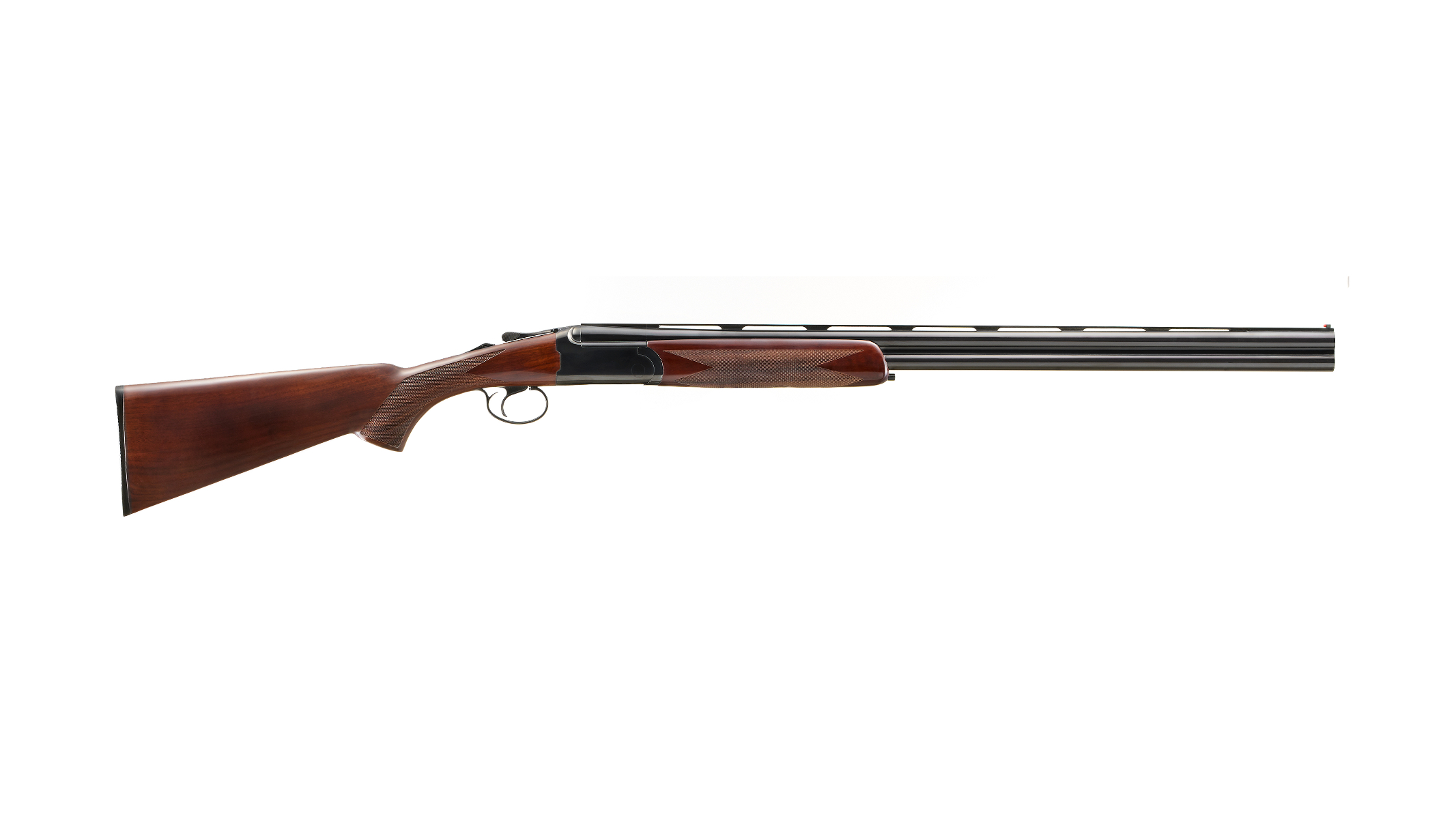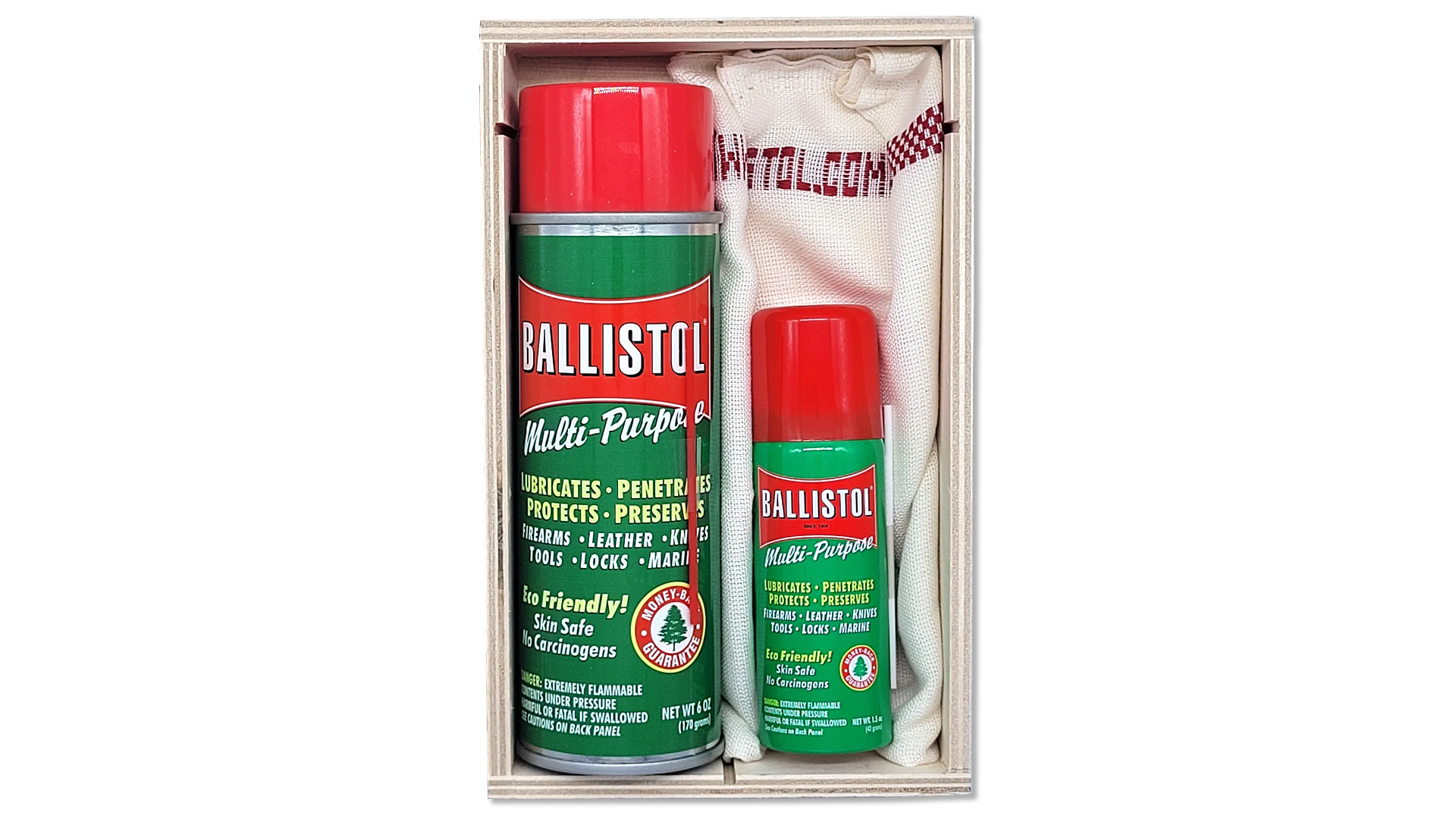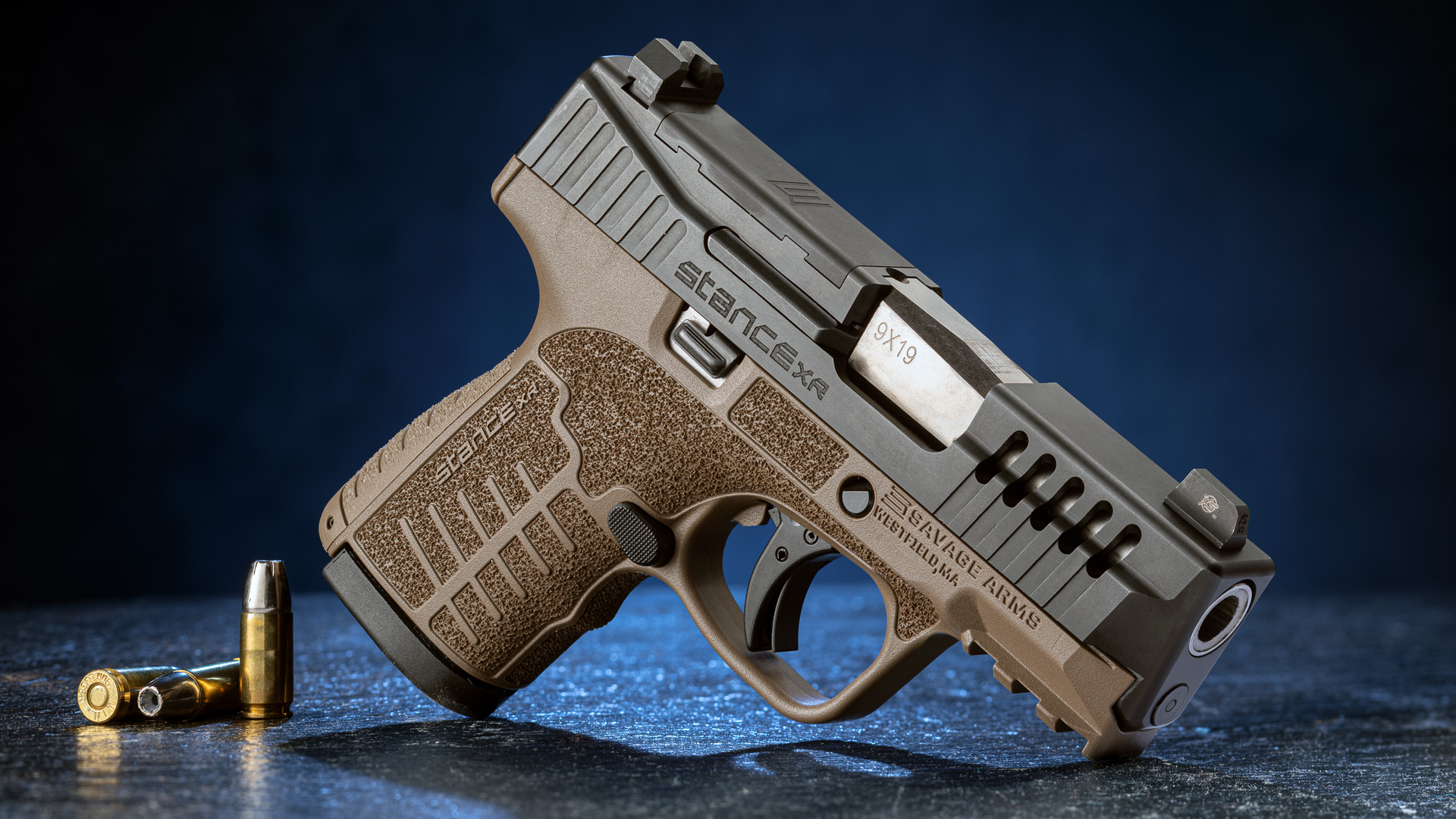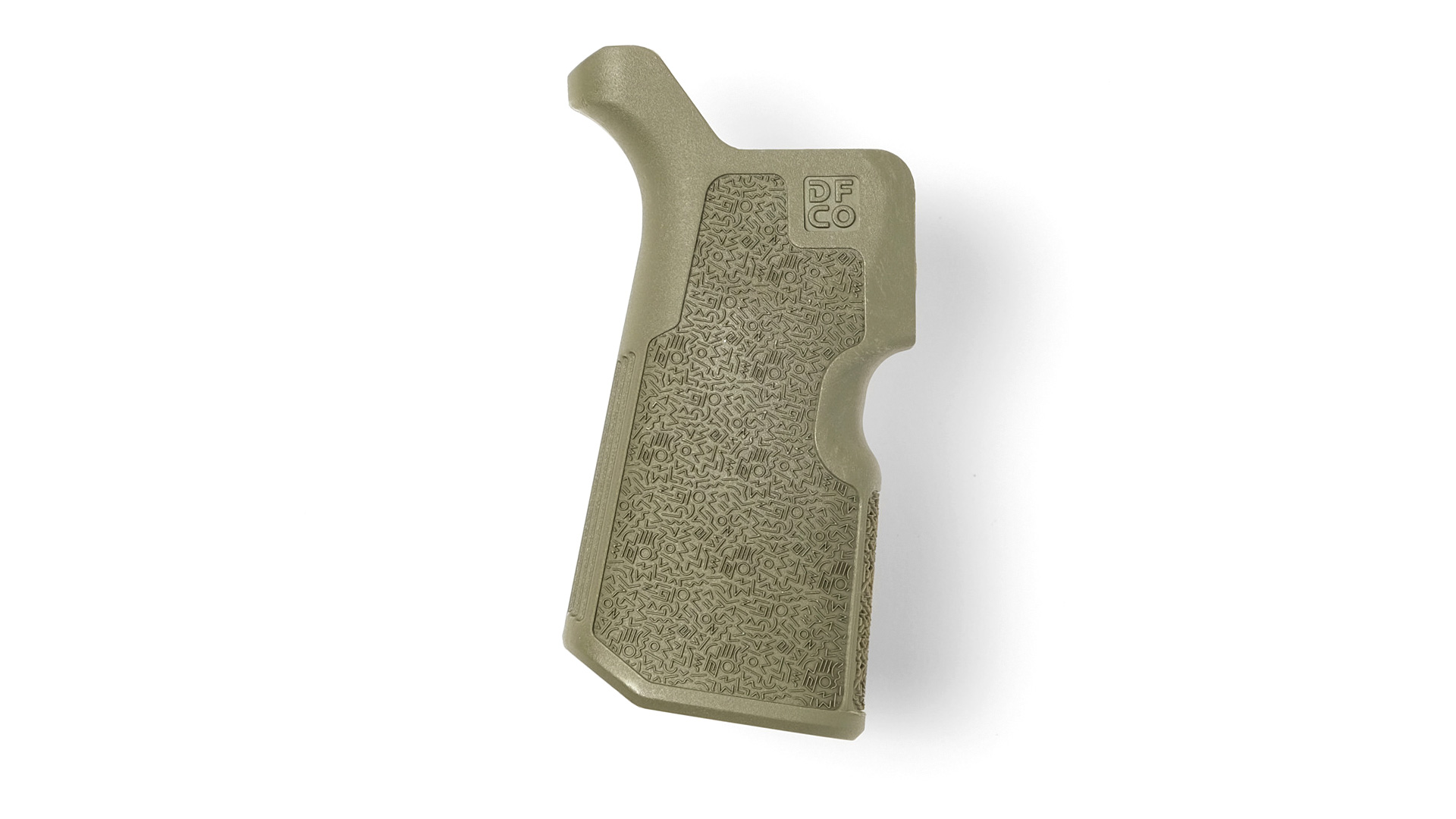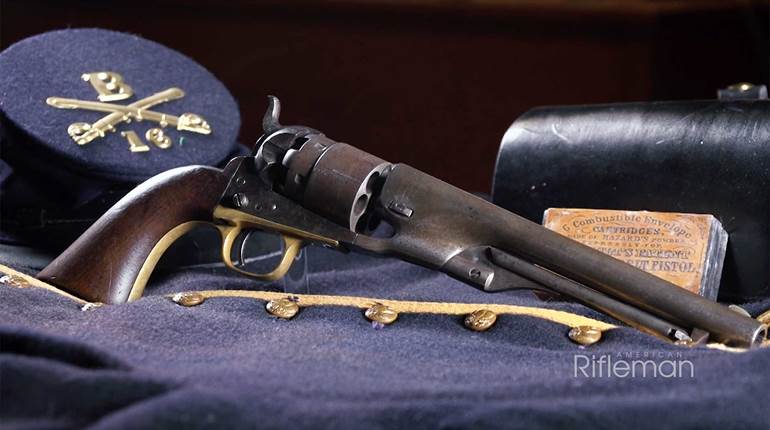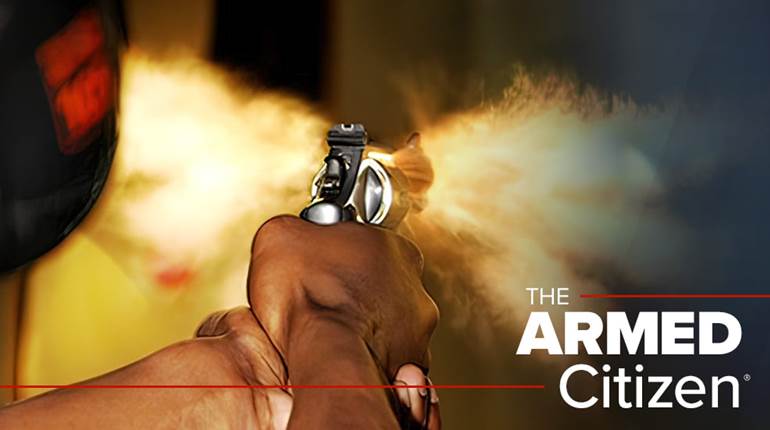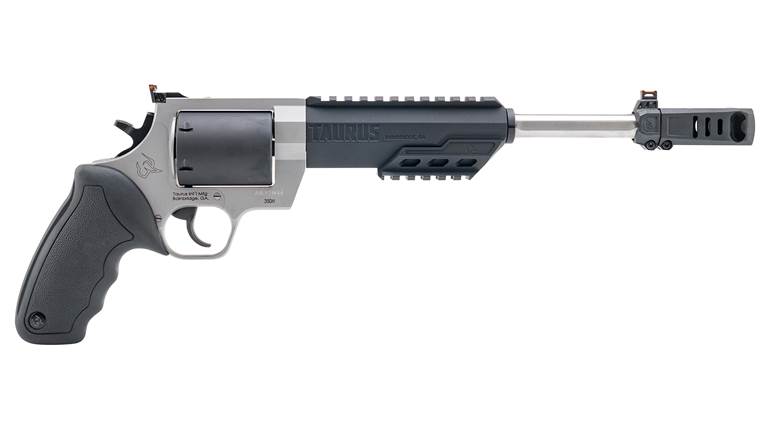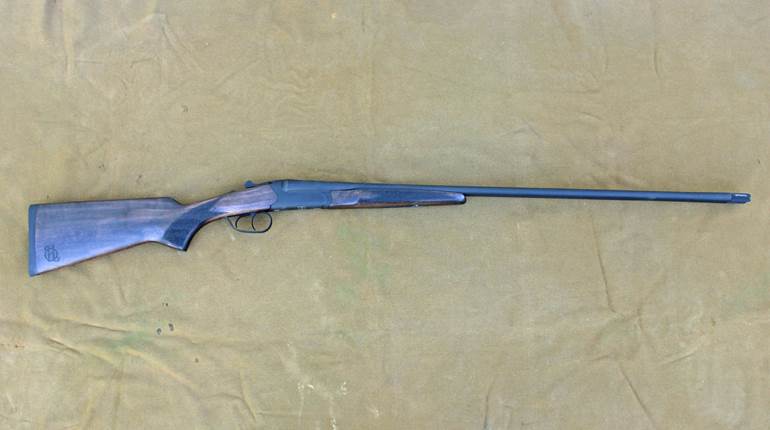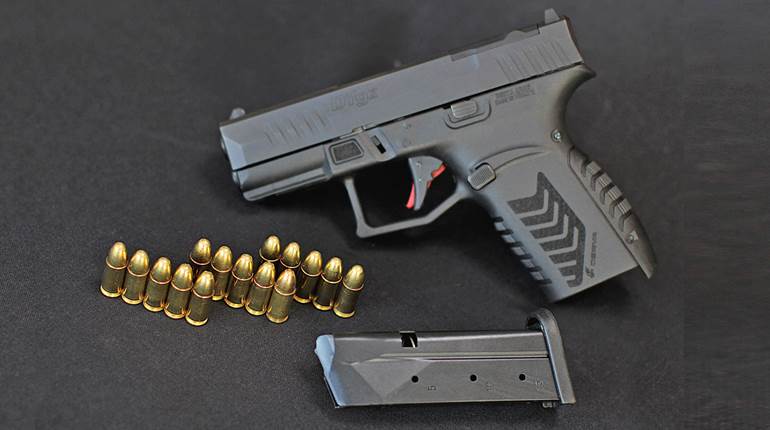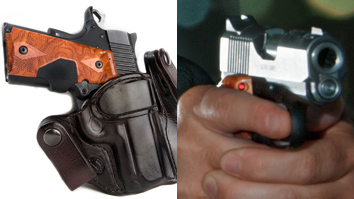
Gallery

Sig Sauer P250SC
Sig Sauer P250SC

Kahr PM9
I have never used a gun in the line of duty or defense, and I have not studied the manuals of experts. But after more than 15 years of carrying a concealed gun in office and urban settings, I have found ways that work for me.
I am a small—145 pound—active male, without a lot of body fat. If I were larger I’d carry a Glock 23 full time, because this gun is simple, safe, accurate, impervious to body sweat, high-capacity and the .40 S&W caliber is a nice balance between a 9 mm’s ease of shooting and a .45’s terminal performance. But I have a difficult time concealing the Glock when I am not wearing a coat, vest or un-tucked shirt. So in winter months or when I’m going dressy, I opt for the supreme shootability and firepower of the Glock. But when I’m doing something more active or wearing summer clothing, I carry my Kahr PM9 because it’s a reliable semi-automatic handgun that holds 7+1 rounds of 9 mm +P ammo (with extended magazine) and it weighs 1 pound, 4 ounces, fully loaded. It’s super slim, and it does not print through my clothing. I carry it in a simple, inside-the-waistband, Don Hume leather holster that is quick, quiet, secure and comfortable because it has conformed to my body. I keep it on my strong side hip, slightly behind the point of my hipbone, to further conceal it.
If I wear a T-shirt or a shirt tucked in without a jacket in ultra-covert carry mode, I switch to a Galco Ankle Lite holster. Its neoprene band is comfortable and secure, and its metal thumb tab makes it about as quick as an ankle holster can be. When on my ankle, I utilize the Kahr’s 6-round, flush-fitting magazine, and I keep the gun strapped to the outside of my strong-side leg to facilitate drawing.
I have modified my Kahr in two ways. First, I replaced the standard sights with XS Systems Big Dot Tritium night sights. The Big Dot is the fastest and most accurate handgun sight I’ve ever used. Secondly, I wrapped grip tape around the PM9’s miniscule grip. Many defensive gurus will advice against this for fear that the tape could come loose and hamper the trigger or magazine feeding, but because I believe any extra purchase afforded on the tiny grip of this gun is advantageous in drawing and shooting, especially when palms are sweaty, I’m a believer.

Colt 1911 or Smith & Wesson 340PD
There is nothing new that can be said about the 1911. If you do see something about the 1911 that you had never seen before, it’s because you haven’t been reading gun magazines long enough. That right there makes it hopelessly obsolete in many peoples’ eyes, but I cling steadfastly loyal to this great pistol as a limpet clings to a rock. It is the only center-fire semi-automatic pistol I have ever owned, save a 1903 Colt that was handed down to me from my grandfather. Mind you, I have shot and evaluated dozens of other self-shuckers in a plethora of chamberings, but when it’s my hide and my money I’ll go all in for what John Moses built every time.
The 1911—a Series 70 Colt—you see pictured here is my first one, bought used in 1974 for the outrageous sum of $189. After more than 50,000 rounds and suffering the abuse and indignity of my less-than-skillful gunsmithing, I finally was able to get it rebuilt by Kings Gun Works in Glendale, Calif., in 1998. The only original parts are the frame and slide. It features a ramped, match-grade, stainless-steel barrel hand-mated to the bushing and slide. The beavertail grip safety is Kings, and it has a proud “cheater pad” at its bottom to ensure disengagement when I grip the pistol. The fire-control system is all Kings and set to break at 3 1/2 pounds. At my insistence Kings filled in the factory dovetail and re-machined the slide to accept an S&W K-frame rear sight. I did that because it provides a familiar sight picture, and it adds some class to the gun. The grip panels with my initials are Circassian walnut and a gift from KN-NIL Grips.
Virtually any time I venture outside my home base, this pistol will be on my right hip in an El Paso Saddlery Allegiance holster, along with a pair of magazines. I have other 1911s, and I am hopelessly wed to my revolvers in many situations, but when it comes to this pistol, we’re like an old married couple—been together for four decades and we just can’t get along without each other.
There are occasions when the risk of attack is relatively low and your wardrobe of the day isn’t well suited to covering a full-size pistol. Summer comes to mind when many of us are togged in shorts and a light T-shirt. One would clearly stand out if one wore a tac-vest to cover a full-size pistol and spare mags. This is where the Smith & Wesson J-frame shines. Surely there are other manufacturers’ revolvers that fit the bill, but my long-standing loyalty to the gentle-people of Springfield, Mass., makes it a no-brainer for me.
For years I carried a S&W Model 60, a stainless steel .38 Spl., for which I removed the hammer spur to better facilitate getting it out of a pocket quickly. This little gat is a fine choice, but after a while I began to notice that it was relatively heavy in the pocket, and it prints—or shows its outline—clearly through most clothing. Once again the innovators in Massachusetts came to the rescue.
At one time S&W offered the Model 40 Centennial. Built on the J-frame, it featured a shrouded hammer. It was popular for detectives. For a while the company offered the Model 340 PD, in essence a Model 40 with a frame made of Scandium and a titanium-alloy cylinder to save weight and chambered for the .357 Mag. My 340 PD weighs 14.5 ounces loaded with Speer 125-grain Gold Dots and with a set of custom grips by Craig Spegel—less than half the weight of the Model 60. I barely know that it is in my pocket. It’s not the handgun I want for a major fight or upheaval, but on those occasional casual, low-risk environments it is mighty comforting to have it lounging in a cargo pocket. Though no longer made, if you come across one on the used market, buy it. You won’t be disappointed.

Ruger P95
My carry gun is a Ruger P95 in 9 mm. It is what I consider my “workhorse” pistol. It’s certainly not as pretty as most, but what it lacks in style it makes up for in reliability. It’s a gun I don’t worry about. As long as it’s there, I know it will function and if needed, send all 16 rounds to their intended target. It’s not an expensive piece, so I don’t baby this gun. Whether tossed in the truck, tucked in a jacket or stashed in the boat, my Ruger does the job. And it doubles as a hammer, too.

Colt Combat Commander
I started carrying a 1911 a little over 40 years ago, when I was able to talk the chief of police into letting us carry autoloaders. Experience showed me that the .45 auto is the most powerful handgun that I can handle quickly and accurately. In addition, its relatively slim profile makes it quite easy to conceal.
This particular pistol has been virtually my constant companion for the past 20 years. It is a 70-Series all-steel Colt Combat Commander in .45 ACP. About 5 or 6 years ago, I shipped it off to Novak's where Charlie Pulit did a nice tune-up on it, adding the Novak Lo-Mount fixed sights, thin stocks and several other nice features.
I've always thought of the 1911 as “the thinking man's defense gun.” Proper training in its maintenance and handling is a must. If one fails to learn the pistol properly, it can bite you. However, once mastered, the 1911 proves why it is one of the finest fighting pistols ever designed. And it will stop a fight, I can assure you of that.

Ruger LC9
I carry a Ruger LC9 most days. Why? It’s a rather short story. I used to carry a full-size Springfield Armory XD9 in an IWB holster, but it was heavy. I’d have sore muscles all along my right side and the pistol was difficult to conceal in warm weather. Therefore, I began looking for an ultra-compact 9 mm to become my everyday carry gun and put the XD in my nightstand safe, where it would be an ideal home-defense pistol.
Around that time, Ruger introduced its LC9, a scaled-up version of its LCP in .380 ACP. Knowing how popular the LCP had become and hearing very positive testimonials from colleagues about the little .380, I was confident Ruger knew how to make tiny concealed-carry pistols, but I wanted something with a little more power for self-defense purposes. So I tried out the LC9, and decided it would be perfect.
I’ve put hundreds of rounds through my LC9 in practice sessions and never had a hiccup. Though it has decent sights for such a small handgun, I elected to install a Crimson Trace Laserguard on the pistol, which makes it capable of superior accuracy at self-defense ranges, not to mention much easier to get on target.
The LC9 comes with a seven-round magazine that has both a flat and a flared floorplate. I much prefer the flared version, because it allows my entire hand to fit on the diminutive grip, giving me a much more stable hand hold. My spare mags also all wear the flared floorplate.
While I miss the extra 10 rounds in my XD, the weight loss has truly been a blessing. With the LC9, I don’t even feel the pistol when it’s in its CrossBreed IWB holster, and my aching right side thanks me for it every day. The XD is at home in the bedside safe, ready to defend against a home invasion, and I still carry it to the range, but for everyday carry the combination of 9 mm power and super-small dimensions makes me extremely happy with the Ruger LC9.

Kimber Ultra Carry in .45 ACP
My first handgun was a Ruger Vaquero in .45 Colt. At the time, I was big into roping, riding, rodeo and all things cowboy, which is why I purchased a single-action revolver. For years, that gun hung in a western rig, either from my waist or in my truck. I loved that gun, and still do as I’m more of a gun buyer than seller, but when I decided to start carrying a handgun for self-defense, I went a little more practical.
The design of my carry gun is only about 60 years newer than the Vaquero, and is actually older since the Vaquero contains transfer bar technology, which allows all six cylinders to be loaded, that is quite newer than the original design of the M1911A1. Both are single-action handgun firing slow, heavy bullets in .45 caliber. One just has to be manually cocked after each shot.
I still carry the Kimber Ultra Carry in .45 ACP that I purchased close to 15 years ago for $660 plus tax, which really shows the age of my little friend. At the time, most 1911 fans purchased Colts and customized them with nice little features such as bobbed hammers, skeletonized triggers and extended safeties. Kimber, however, was offering many of those same features standard, and for just a little more than a Colt, less in many places.
I carried my Kimber in a variety of holsters over the years, until I settled on a Milt Sparks Versa Max II insider-the-waistband carry rig. While I did upgrade the grips to Crimson Trace Lasergrips, the gun still sports the original black, combat sights. I’ve thought about swapping it out for a newer version, or even upgrading, but this gun has stood, metaphorically of course, at my side for a long time. I’m a bit of a fan of loyalty, and besides it can handle any type of .45 ACP ammunition, regardless of how dirty, without a hiccup. That is my first priority in a carry gun.

Smith & Wesson M&P Shield
My carry collection of firearms begins and ends with the Smith & Wesson M&P Shield. Don’t get me wrong, I have other firearms that I do carry on occasion, and I completely understand why some folks will only carry a revolver for self-defense and others cling to their full-size M1911s. I get it, and God bless all the law-abiding, gun-toting armed citizens out there. But for me, there is no substitute for the 9 mm Shield.
Here’s the low down: The Shield is thin and compact so it stays close to my hip and doesn’t print when I’m carrying concealed. It’s reliable; I’ve put thousands of rounds downrange with mine—if you are going to carry you had better keep up on your practice—and I’ve witnessed thousands more fired from other Shields. This gun just plain runs great. With the standard and extended magazines I have 7+1 and 8+1 capacity, respectively, on par with M1911’s and greater than the sweet .45 ACP XD-S sub-compact from Springfield.
So here is where the “.45 ACP or nothing” crowd jumps on me for carrying a 9 mm. Get over it folks, I like M1911s, I think the XD-S is awesome, but a smaller gun is easier for me to carry and conceal, and I believe the 9 mm Luger is the perfect cartridge for sub-compacts. As well, since I carry Hornady 135-grain Critical Duty ammunition, I know I am getting exceptional performance from every round.
So how do I carry? Most days I wear a CrossBreed Instructors Belt or BLACKHAWK! Riggers Belt, using a DeSantis belt holster for OWB carry or a CrossBreed MiniTuck for IWB. I also have a DeSantis paddle holster that I love for working at the range but it’s a little bulky for concealed carry. The nice thing about the CrossBreed is that it is molded to accept the Shield with the Crimson Trace Laserguard attached.

Walther PPK/S
My carry gun is a Walther PPK/S in .380 ACP. Many firms have produced the pistol over the years, including Smith & Wesson. And for a long time U.S. imports were controlled by the Alexandria, Va., firm Interarms. There is nothing wrong with any of them. However, when it came time to choose my own PPK/S, I sought out the genuine German article. I purchased mine from an NRA member and American Rifleman reader in Oklahoma via GunBroker.com. Best I can tell, his son brought it back to the States after U.S. Army service in 1982. As such, it has no Interarms stamp—only German marks.
The PPK/S has an interesting history.
The Carl Walther Waffenfabrik arms factory was established in 1886 but didn’t begin producing autoloading pistols until 1908. In 1929, its 10th pistol was designed specifically for police work and labeled the “Polizei Pistole,” the PP. Its popularity led the company to produce a smaller version in 1931 for concealed carry by plain-clothes policemen. It was designated the “Polizei Pistole Kriminal,” the PPK. As many gun owners know, the PPK gained worldwide notoriety when Ian Fleming’s famous fictitious spy, James Bond, Agent 007, replaced his Beretta .25 with the German pistol beginning with the novel Dr. No.
The PPK is a smaller version of the PP, and was produced in great numbers from 1931-1945. After World War II, production of both pistols was resumed in France under German license before eventually returning to West Germany in the city of Ulm ab Donau—the same factory where my pistol was produced. While it’s essentially the same design as the PP, the PPK uses a different grip frame. While the backstrap is integral to the frame and the grip panels are separated on the PP, the PPK grip frame embodies the rectangular shape of a magazine and the backstrap is formed by a single, U-shaped grip made of plastic. The PPK/S design was necessitated by the U.S. Gun Control Act of 1968, which limited the size of pistols for “sporting” purposes imported to the States. It’s a cross between the PP and PPK that combines the PP frame with the shorter PPK barrel and slide. PPK and PPK/S pistols have been made in 7.65 mm (.32 ACP), 9 mm kurz (German for “short,” or 9x17 mm; otherwise known as a .380 ACP), and in .22 LR and 6.35mm (.25 ACP).
Any way you cut it—PP, PPK or PPK/S—the pistol is a blowback-operated double/single-action design that features a fixed barrel, an exposed hammer, double-action trigger, single-column magazine, fixed sights, and a frame-mounted manual safety/de-cocker.
The double-action trigger, combined with the de-cocker, is what led me to choose the PPK/S for concealed carry, for with those features I can holster the pistol in one of two modes and always be ready to employ it. I can load a magazine, chamber a round then de-cock it and engage the safety (hammer is lowered; I need to draw and disengage the safety before firing). Or I can load a magazine, chamber a round then de-cock the pistol and leave the safety disengaged (hammer still is lowered). I like this option best because I can carry in “Condition 1”—loaded, locked and cocked—but I needn’t deal with a safety if I need to fire hurriedly—I merely draw, aim and squeeze.
The PP-PPK-PPK/S design was not the first DA/SA design, but it proved the most popular and is still the first that comes to mind when discussing the advantage of an initial double-action trigger pull followed by single-action pulls—and it was developed way back in 1929, proving it’s hard to improve upon perfection.
Another problem solved: The little 9 mm kurz is easy to cycle. Now, many people would suggest if you encounter such difficulty on an autoloader you should probably carry a revolver. After all, one could carry a .38 Spl. loaded with +P loads for greater stopping power than any .380. While that’s true, remember a revolver adds bulk to your belt line and its design lengthens reload times. I’ll stick with my PPK/S and carry a total of 14 rounds (one magazine loaded, another ready on my belt) with minimal bulk.

Smith & Wesson M&P Model 340 PD
I have access to—and have shot—a variation of just about every major defensive handgun commercially offered, and quite a few that are no longer available. When it came to selecting my personal carry gun, it had to be small and light, so it would, indeed, be carried. A custom 5-inch Government Model is a great defensive handgun, but I was not willing to make the wardrobe and lifestyle choices necessary for carrying one. I took in my own experience and looked to what my friends and mentors—the men I respect most—carry. These are guys who have been in gunfights; guys who have carried guns in harm’s way on a daily basis. In their pockets, inevitably, was the humble J-frame.
The Smith & Wesson J-frame, in its hammerless (actually it has an internal hammer) variety, is one of the most classic carry guns of all time. There is nothing to catch or drag, with a short 1 7/8-inch barrel, less than 6 ½-inch overall length and five-rounds in the cylinder, it can go anywhere I go while wearing pants. The thickness of its cylinder is its main downside.
My specific model is the S&W M&P Model 340 PD, chambered in .357 Mag. In my view, it is the final stage of evolution for the S&W snubby. If it could be better suited for close-up personal defense, I am unsure how. The frame is made of scandium and aluminum alloy, delivering a weight of a scant 11 1/2 ozs. I fitted my gun with a set of Crimson Trace Lasergrips to supplement the big, round tritium dot. I like that dot because I can see it—and quickly.
I like the safety of its mechanical operation; there is no manual safety. A long, heavy, deliberate double-action-only trigger pull is required. In the case of my gun, it takes 12 pounds of pull to draw the trigger back against the mainspring, rotate the cylinder, engage the locking bolt then release the hammer to fire. The pull weight is heavy, but can be mastered with practice. It can only fire when its operator intends it to do so. The scandium frame is larger on the 340 than a 442, so my Galco paddle holster was made specifically for this model.
I routinely carry 125-grain .38 Spl. Hornady Critical Defense loads as I deem the penetration adequate while keeping recoil manageable should subsequent rounds be necessary. If I am headed for the backcountry, I can and have stoked it with full-house .357 Mag. loads, but the recoil is extremely unpleasant. And they are loud, very loud.
The J-frame is a gun carried by a man not looking for trouble, but can be expected to work reliably and instinctively if it beckons.












